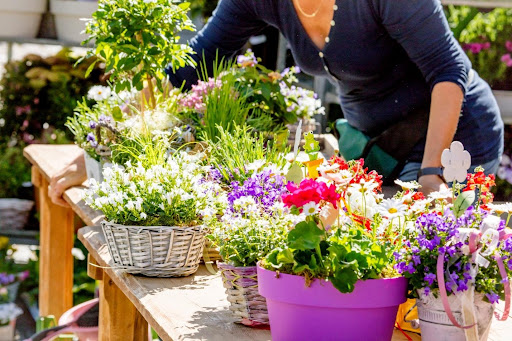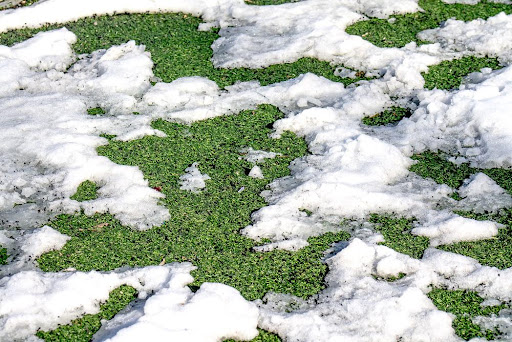You might want to increase the succulents in your garden without buying additional pots online. If so, you can choose to grow them by propagating. The process of planting the cuttings and letting them develop roots, stems, and leaves is widespread for gardeners. This is where you cut a part of the mature parent plant and grow the cuttings into new pots. They will soon produce baby plants that will bloom flowers and leaves in the same way as their parents as rooting hormones.
The entire process is affordable and reliable, especially if you want to practice your gardening skills. There are leaf, stem, or root cuttings to choose from, and getting rooting hormones from sites like Gardening With Confidence can help you have higher chances of success. Here are some of the things to know about these hormones.
About the Rooting Hormones

These are chemicals and products that stimulate the growth of the plants’ roots. They are typically used in cuttings like succulents and other flowers to help them develop their roots and get their nutrients from the soil. These products can come in powders, but they can also come in liquid or gel forms.
When these products are used correctly, know that they can cause rapid reproduction of roots that are more robust compared to the cuttings that didn’t receive any treatments. Gardeners use these hormone products in propagating succulents and other ornamental plants. This is also applied to the leaves, stems, and other parts that you want to grow. To learn more how to propagate succulents, check this guide here. It’s usually available online and in local garden centers.
Where Can You Apply the Powder?

The rooting hormones can work on the roots, stems, and leaves of the plant. They can dramatically increase the chances of the plants’ growth. You may see a dramatic increase of growing and blooming in the propagated stems than those that haven’t received anything.
If you’re planning to propagate the succulents that have blooms, you should wait a bit for them to fade before making the cuts. The rooting process will require a lot of patience and know that the parts are very fragile if they don’t have any roots. It’s best to keep the medium moist such as cactus soil, and you should never expose them to direct sunlight or standing water.
Using the Hormones
- Use a sharp and clean knife when removing the stems from the healthier and more mature succulents. Make sure that you’re getting them from healthy parents where the tips have grown from four to seven inches long. Remove the topmost part of the stem and cut only a few inches. Make some cuts near the nodes, which are the swollen parts. Take out any flowers or leaves from the node areas.
- Put the bottom of the cuttings in water. Moisten it so the powdered rooting hormone will stick more to the stems.
- Transfer the rooting hormone into a clean pot or bottle. Gently roll or dip the bottom part of the cutting into the powder but only a few inches down. You should not dip the cuttings into the original container of the powder to avoid contamination. Also, don’t apply it any higher than the depth which you’re going to plant. Lightly tap out or shake off the excess powder at the edge.
- Put the stems in a potting medium that does not have any soil. Make sure to put a hole in the bottom using a pencil, and it should have enough space so that the hormones will not be rubbed off as you begin to sink the succulent into the soil.
- Pat the soil or tamp it down so you won’t allow any air pockets inside. Make sure to lightly water the area or do some mists using spray bottles. Keep them warm at a temperature of above 60-degree Fahrenheit. The systems will develop best when these cuttings are not going to be placed in direct sunlight.
Working on the Leaves

Some plants like succulents don’t necessarily have stems, so they are propagated through leaf cuttings. The methods will largely depend on the current leaf structure, so make sure to apply the rooting hormone in an area that’s closest to the plant’s center. Cover everything with a soilless mix of potting where you push the part of the leaf into it. Get more info about the mix in this link: https://homeguides.sfgate.com/make-soilless-potting-mix-43367.html.
If you have succulents with shorter stems like the African violets, dip them into the rooting hormone powder and plant them in the soil just like what you would do with the stem cuttings. Sink the stem whenever possible into the potting mix.
You may want to cover the back of the leaf with the rooting hormone and press them down into the soilless mix. Keep all the plants out of the sun until they begin to develop a hardy root and a more robust resistance to the elements.
Propagating the Roots
The process of root cuttings includes some of them that were gotten from the parent plant to produce new baby blooms. One of the best seasons to do this is during autumn, where the roots have the entire winter to produce and grow when springtime comes. Here are the processes.
- Gently separate the soil from the parent plant.
- Cut around 2-inches slender root pieces. Cover the area of the cuttings of the parent plant for them to continue growing.
- Roll out the cuttings and plant them in shallow medium pots.
- Keep them moist.
Successful propagation of the succulents or any other plants is clean and fresh-cut. When you’re starting the rooting process, remove the leaves. Some of these rooting hormones are auxin-based, and they are applied to the base. They have talc mixed in them, and if you want to increase the adhesiveness, you can always dip the stems repeatedly into water.
The liquid forms may be more effective than the powdered ones when you give them the same concentration. The uptake of auxin may be inhibited with the texture of the stem, but any talc-based products are generally not toxic. Check with the manufacturers about the formulation that’s easier and quicker to apply.



